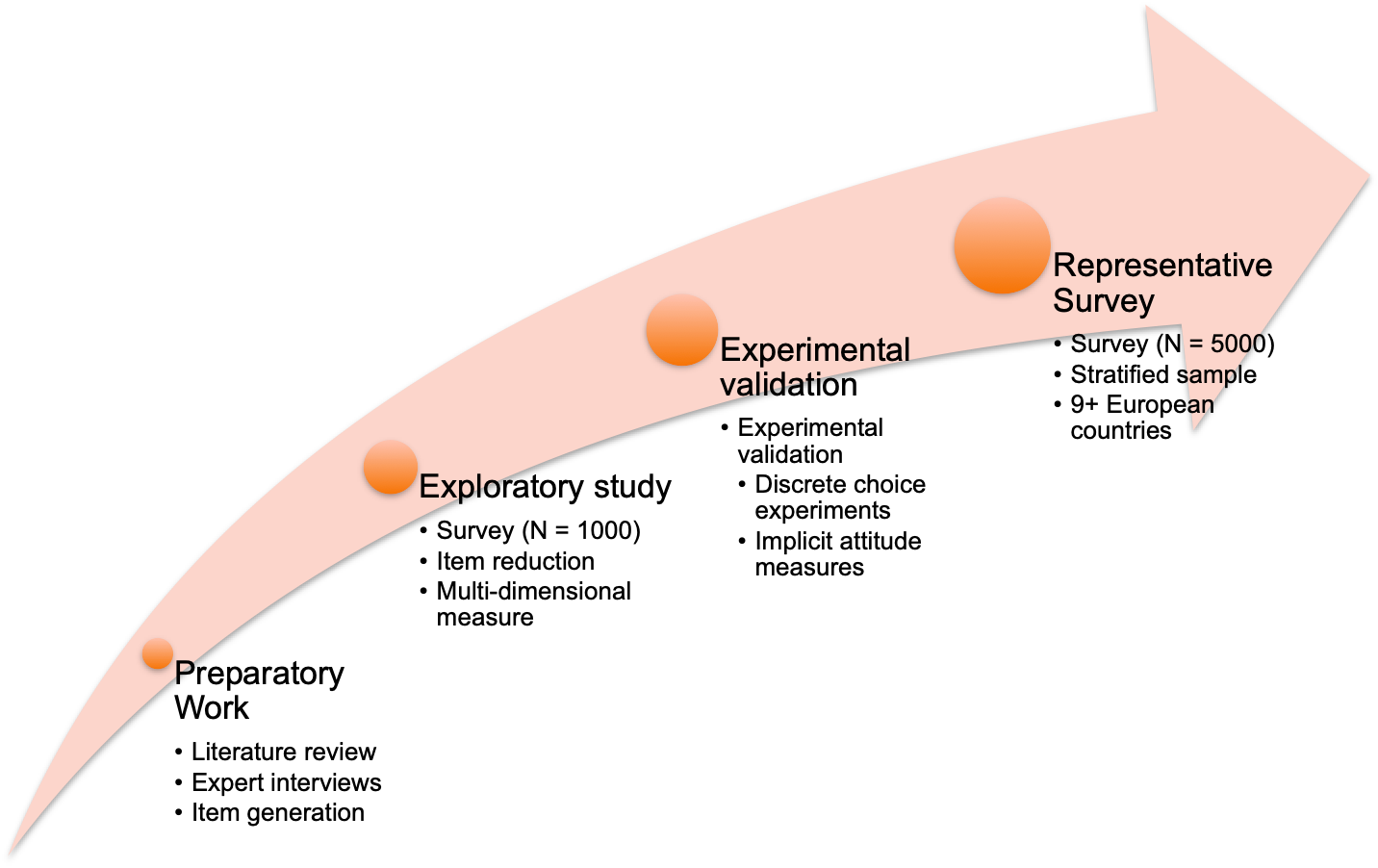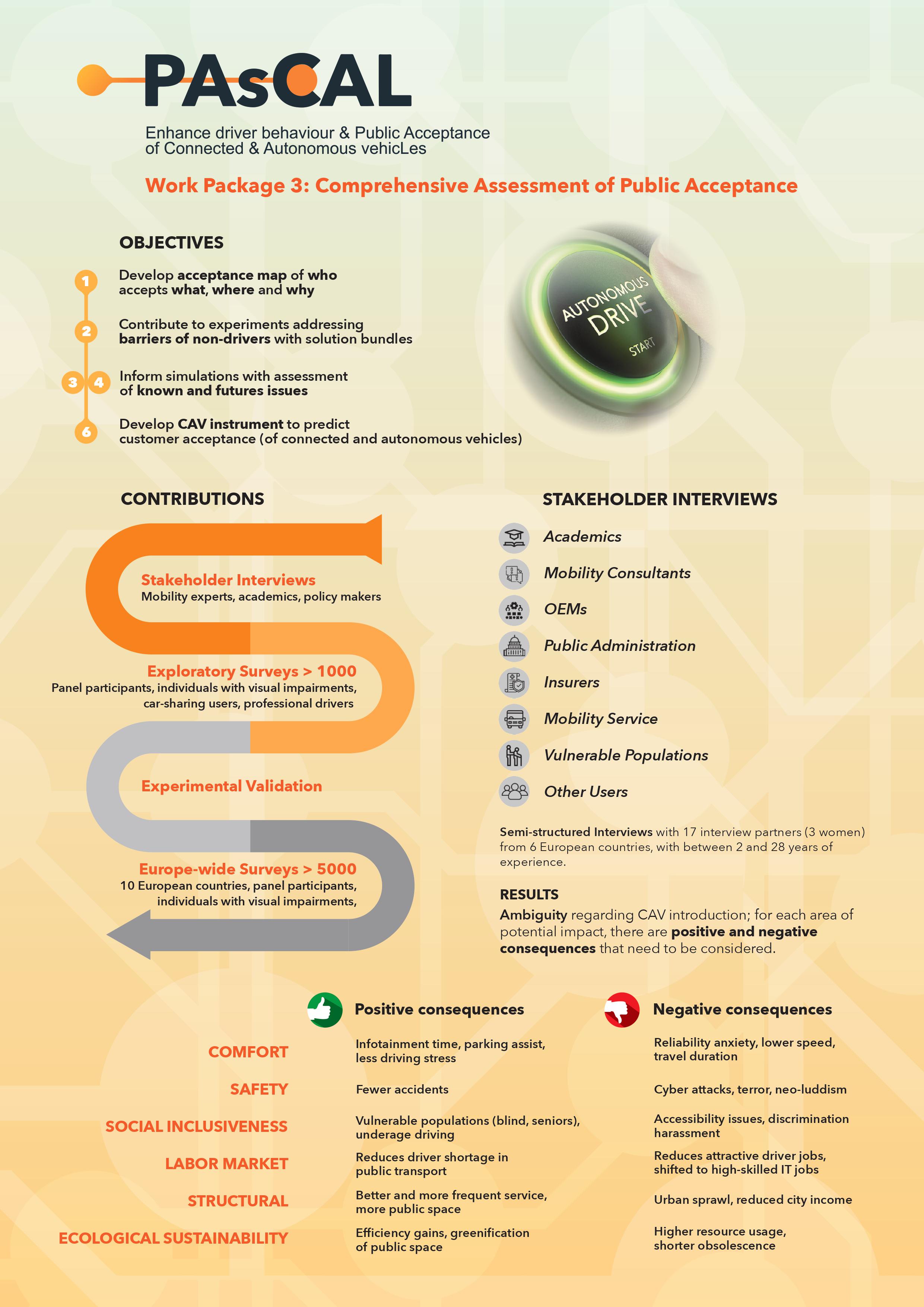
Public acceptance
The basis of the Guide2Autonomy is a profound understanding of public acceptance of CAVs and the way in which it can be improved. The first way to do this is to gain insight on the ideas and concerns of a wide public in Europe. This will be done via large-scale questionnaires and experiments with a large variety of users. Special care will be taken to involve not only users who are car drivers interested in technology, but also users who are representative of the European population, with specific attention to minority groups and those who currently experience some issues with their mobility. By developing a tool that is able to measure user acceptance in a standardized way, PAsCAL will empower users and organisations to determine the impact of their solutions and discussions on CAV acceptance. Gaining knowledge on user acceptance will result in constructing a multi-dimensional mapping of CAV acceptance.
This methodological approach aims at addressing stated intention to use CAV, and the factors which influence intention to use CAV in four phases:

Related papers:
-
June 2021
Consequences of autonomous vehicles: Ambivalent expectations and their impact on acceptance
Connected and autonomous vehicles (CAVs) are within reach of widespread deployment on public roads, but public perceptions are ambivalent. The objective of the present research was to assess expectations about the consequences of CAV introduction. These expectations should explain CAV acceptance, but their relative importance is poorly understood. We conducted a survey with a representatively drawn panel sample (N = 529) from France, Germany, Italy, and the UK. The survey consisted of a large item pool of expected consequences from CAV introduction, as well as general and affective evaluation of CAVs, ease of use, and behavioral intention to use CAVs. Exploratory factor analysis revealed four facets of expected consequences: road safety, privacy, efficiency and ecological sustainability. On average, expectations were mostly positive for ecological sustainability and safety, but negative for privacy. At the same time, substantial variance existed between respondents and between countries. For safety and efficiency, improvement was expected by a third of respondents, while another third expected worsening. Respondents from Italy expected more positive consequences for safety, while respondents from both France and Germany expected more negative consequences for privacy. To different degrees, all four facets predicted the intention to use CAVs in a structural equation model, primarily via affective evaluations. For policy makers, manufacturers, and service providers, understanding the trade-offs inherent to different CAV solutions will be central to ensure citizens’ needs are respected.
-
July 2020
Ambivalence in stakeholders’ views on connected and autonomous vehicles
Connected and autonomous vehicles (CAVs) are often discussed as a solution to pressing issues of the current transport systems, including congestion, safety, social inclusion and ecological sustainability. Scientifically, there is agreement that CAVs may solve, but can also aggravate these issues, depending on the specific CAV solution. In the current paper, we investigate the visions and worst-case scenarios of various stakeholders, including representatives of public administrations, automotive original equipment manufacturers, insurance com-panies, public transportation service providers, mobility experts and politicians. A qualitative analysis of 17 semi-structured interviews is presented. It reveals experts’ ambivalence towards the introduction of CAVs, reflecting high levels of uncertainty about CAV consequences, including issues of efficiency, comfort and sustainability, and concerns about co-road users such as pedestrians and cyclists. Implications of the sluggishness of policymakers to set boundary conditions and for the labor market are discussed. An open debate between policymakers, citi-zens and other stakeholders on how to introduce CAVs seems timely.

